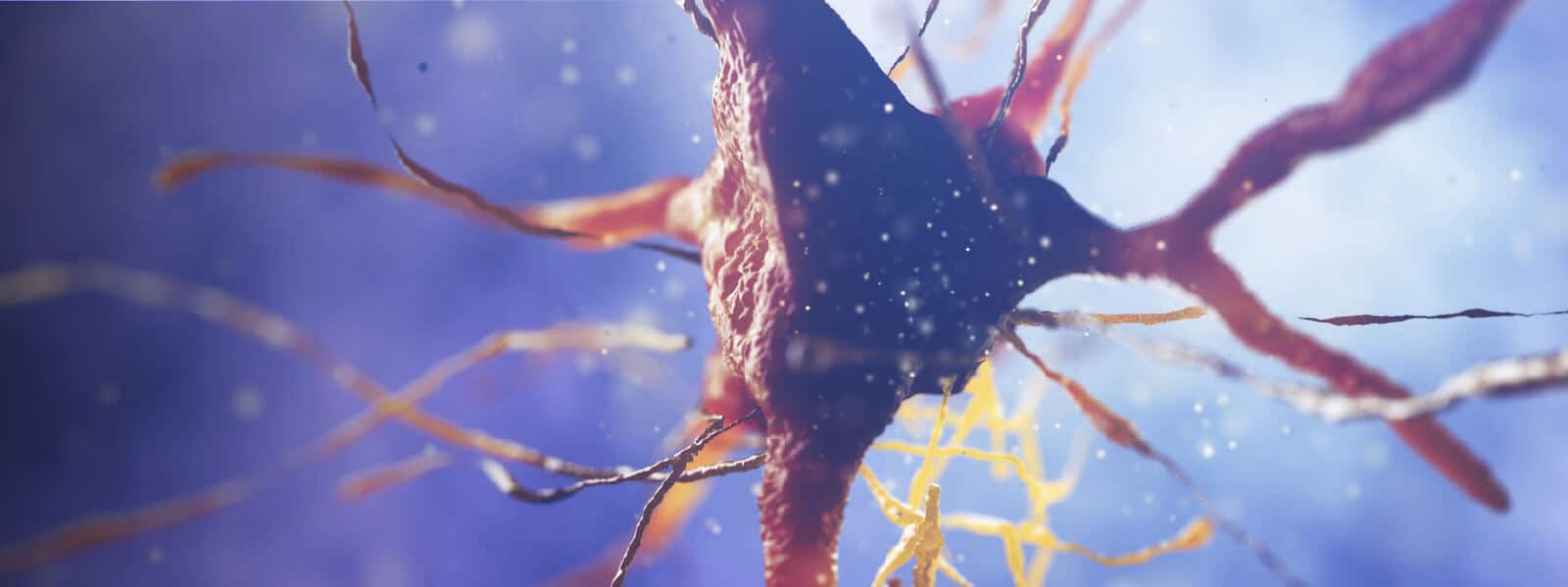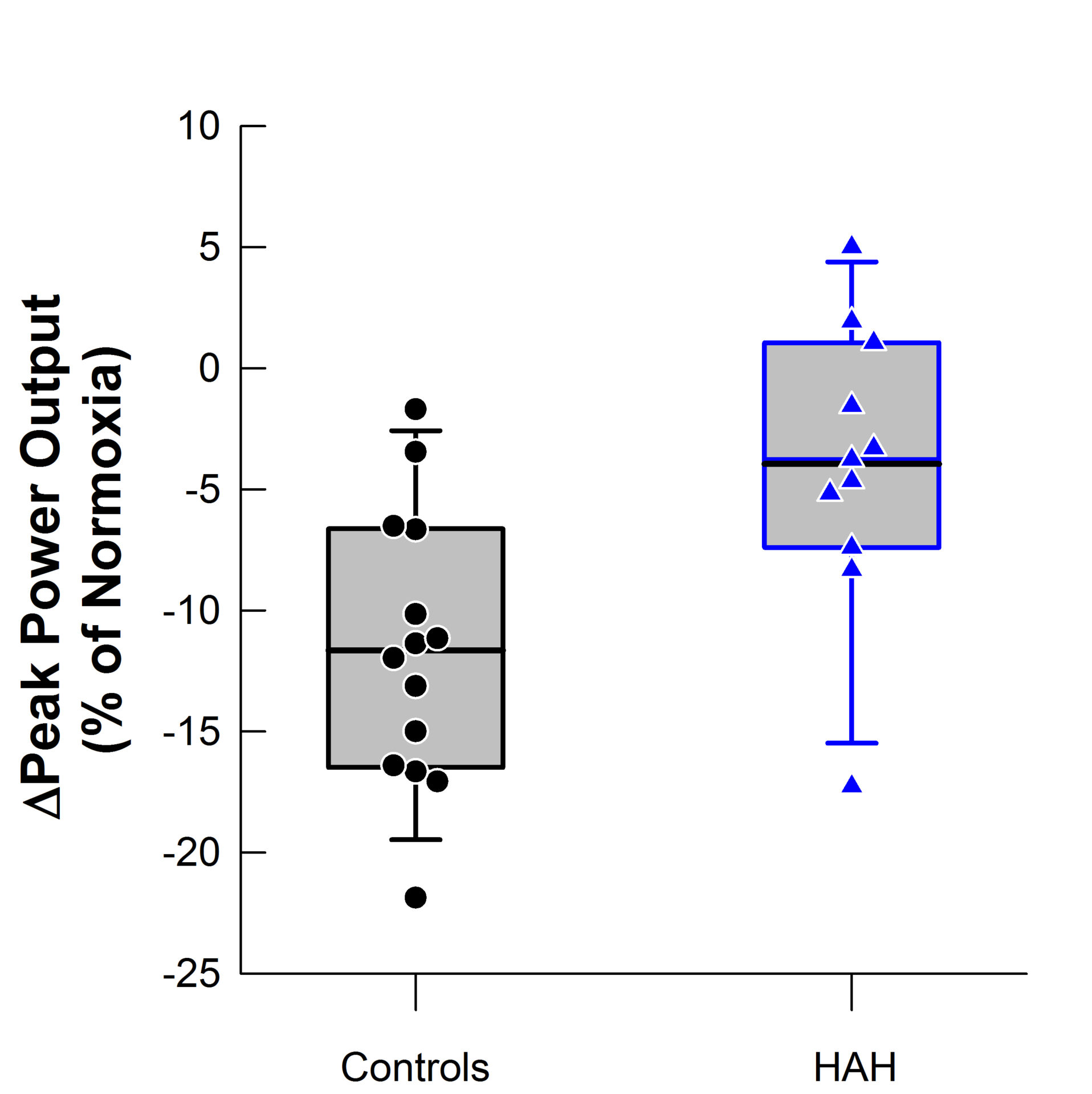
Physiology News Magazine
Hypoxia and comparative physiology in humans
Diversity in haemoglobin and oxygen dissociation curve shifting
Features
Hypoxia and comparative physiology in humans
Diversity in haemoglobin and oxygen dissociation curve shifting
Features
Michael J Joyner, Mayo Clinic, MN, USA
Paolo B Dominelli, University of Waterloo, ON, Canada
https://doi.org/10.36866/pn.118.41
Haemoglobin is perhaps the most studied biologically important protein there is. In higher animals it is central to the transport of oxygen from the air to the tissues and thus imperative to exercise physiology. Haemoglobin levels can also be manipulated in athletes via altitude training and with nefarious practices like blood doping and the unauthorised use of erythropoietin. Subtle differences in the amino acid composition of the haemoglobin chains are also used in evolutionary and comparative biology to gain understanding about how the oxygen transport system adapts, via evolution, to environments like high altitude (Meir and Milsom, 2013). On the opposite end, sickle cell disease, caused by a change in one amino acid on the haemoglobin β chain, is also the sentinel example underpinning the concept of molecular medicine (Perutz, 1976). Haemoglobin is thus everywhere from the most molecular of research labs to surgical care on the battlefield.


Background
Beyond its biological properties, haemoglobin is embedded in medical physiology and biochemistry education. One of the key concepts in what is frequently taught is how four chains of haemoglobin interact as a unit to create the curvilinear oxygen haemoglobin dissociation curve (Fig. 1). The behaviour of this curve allows haemoglobin to be 90% saturated at relatively modest partial pressures of oxygen (60 mmHg) and provides a safety factor for hypoxia caused by moderate altitude or problems in the lung that limit the transfer of oxygen from the air to the blood. In several recent papers we have been exploring how left-shifted, high-oxygen affinity, haemoglobin affects how humans respond to hypoxia at rest and during exercise (Shepherd et al., 2019; Dominelli et al., 2019 & 2020). High-affinity haemoglobin means that for a given partial pressure, there is a higher oxyhaemoglobin saturation compared with typical haemoglobin (Fig. 1). Fundamentally, the high-affinity haemoglobin is able to bind or ‘hold on’ to oxygen more tightly.
Part of the standard teaching is that in response to moderate hypoxia there is a right shift or decrease in affinity of the oxygen haemoglobin dissociation curve. The narrative is that this right shift facilitates the unloading of oxygen at the tissues and defends the organism against hypoxia. This is a great story that tells important lessons about how proteins interact and also about allosteric feedback regulation of proteins by other molecules. In the case of haemoglobin, the allosteric regulation is most notably by 2-3 BPG (a byproduct of red blood cell glycolytic metabolism) and CO2. However, some observations from comparative physiology tell a more complex story and our work on this topic in patients with rare forms of haemoglobin that are left-shifted and have a higher than normal affinity for oxygen are challenging the simple version of this story.
The percolation
What is the rest of the story and where did our interest come from? In the early or middle 1990s one of us (MJJ) was attending a major scientific meeting in the USA. It was likely Experimental Biology then known as FASEB. Deciding to take a lesson from one of my medical school teachers Marlys Witte, who remains active in her middle 80s and is an advocate of gaining exposure about things you don’t know about, I went to a comparative physiology talk on high-altitude animals. I have no idea who was giving that talk, but I do remember this incredible data about the bar-headed goose and how it flies over the Himalayan mountains. Birds have a cross-current lung that keeps the partial pressure of oxygen in their lungs closer to atmospheric than mammals, but the bar-headed goose also has left-shifted haemoglobin compared with lowland birds. The cross-current lung and air sac design of bird lungs means that there is little physiological dead space diluting atmospheric gas in bird lungs so that the partial pressure of oxygen presented to the pulmonary capillaries is similar to atmospheric. The left-shifted haemoglobin along with a drop in body temperature allows its haemoglobin to be more fully saturated when the partial pressure of oxygen is in the 30 – 40 mmHg range. To compensate for the higher affinity in arterial blood, unloading of oxygen at the muscles would then be facilitated by an increase in local temperature (Meir and Milsom, 2013). The result is these geese are able to perform extraordinary athletic feats in a severely hypoxic environment.

At the time I went to the talk it was also known or at least becoming known that exercising human muscles could extract more than 90% of the oxygen flowing across them during exercise, and that the mitochondria in skeletal muscles could work just fine at very low partial pressures of oxygen, a few mmHg or even less. This raised obvious questions about the right-shift story that can be summarised as: “If the muscles can extract everything, during hypoxic conditions like altitude, why not load the oxygen at the lung and let the muscles fend for themselves?” This question seemed especially germane to trained athletes because, among other things, several of the key adaptations to endurance training in skeletal muscles include more mitochondria and greater capillary density. Both of these adaptations should make it easier to get the oxygen from left-shifted haemoglobin.
The question sat there sort of percolating for about 20 years. It came up in overview presentations about oxygen transport and when I showed how much better the best athletes in the animal kingdom were compared to humans. I also knew from my clinical work that there were humans with rare haemoglobin variants that were left-shifted like the bar-headed goose and other high-altitude animals like llamas.
The realisation
Then a few years ago I learned I was eligible for a high-risk NIH grant so I applied. The first application on sex differences and blood pressure regulation was not deemed that high risk and was not funded. However, I resubmitted and figured that exploring right-shift dogma in rare patients might be high risk enough. This of course required me to have access to patients with rare haemoglobin variants and recruit them for studies. Fortunately I work at a major referral centre that does a lot of boutique diagnostic clinical testing including evaluating patients from all over the world for rare haemoglobinopathies. Jennifer Oliveira and James Hoyer run the clinical haematopathology lab at the Mayo Clinic and luckily they had an extensive list of patients and have been enthusiastic collaborators. My research nurse Shelly Roberts, is expert at patient recruitment and she felt that we would be able to find these patients and get them to volunteer for our studies. Discussions with the chair of our institutional review board indicated that ethical approval could be obtained with the proper oversight and safeguards. So we submitted what is, for the NIH, a very short (4-page) application outlining how we could test the right vs. left-shift question by interrogating every step of the oxygen transport cascade in patients with rare forms of haemoglobin using mostly a combination of exercise and hypoxia in conjunction with detailed physiological measurements. There were also just enough case reports from the 1970s and 1980s on exercise and hypoxia in patients with left-shifted haemoglobin to suggest the question was not completely out there and worth a more comprehensive evaluation (Shepherd et al., 2019; Dominelli et al., 2020).

So a good question, access to rare patients, a skilled staff and the right funding mechanism converged at the same time and the grant was funded. At about the same time, Paolo Dominelli was finishing his PhD at the University of British Columbia. Paolo was getting outstanding training on all things respiratory physiology in humans and how to study them and he contacted me about a postdoc. He was able to use the question to get a curiosity-driven and flexible NSERC postdoc grant from the Canadian government to collaborate. Although he was unfamiliar with human haemoglobin variants, he was very accustomed to altered-affinity haemoglobin in the comparative physiology literature as much of it occurred at the University of British Columbia. Thus, the stage was set.
The payoff
The main thing we have found so far is that when breathing 15% v/v oxygen (a similar partial pressure to atmospheric concentrations of oxygen at ~3,000 m of altitude) the exercise capacity of our left-shifted patients falls only about 4% compared with about 12% in our controls, thus the dogma presented in medical school physiology and biochemistry classes has limitations (Fig. 2). The higher exercise capacity in hypoxia appeared to come at the cost of greater metabolite buildup, namely lactate. We also found in separate experiments that these differences in exercise capacity were not related to alterations in the ventilatory response to hypoxia (Dominelli et al., 2019).
Along these lines, as we dug deeper into everything about right and left-shifted haemoglobin we found 1960s papers about Dorset sheep in both the physiology and agriculture/animal science literature. Apparently this breed of sheep has animals with left-shifted haemoglobin. The animal physiologists in Australia were interested in the potential impact of the left-shifted variant haemoglobin on meat and wool production. They also did physiology experiments that included studying how right and left-shifted animals responded to either severe hypoxia or severe anaemia. The left-shifted animals did better during the hypoxic challenge while the right-shifted animals did better during anaemia (Dawson and Evans, 1966 & 1967).
This raises the possibility that when oxygen uptake at the lung is limiting, the best physiologic strategy is to load as much oxygen as possible at the lung and thus saturate the haemoglobin and hope extraction at the tissues is sufficient. By contrast, when O2 content is reduced as in the case of anaemia without hypoxia then a right shift can work to deliver more oxygen to the tissues. These ideas may have therapeutic implications. For example, drugs that left-shift haemoglobin might be useful in limiting sickling in sickle cell disease and they might also be useful in extreme cases of hypoxia as in the adult respiratory distress syndrome. Several compounds are being developed and studied. A right-shifting drug (Efaproxiral) has been developed and its use explored in a number of situations where more oxygen unloading at the tissue might be useful. However, there are currently no approved uses for this drug and it is on the banned list for the purposes of sports doping.
Our larger story also shows the long and winding road to framing and addressing an interesting question, what can be learned when you spend time outside of your intellectual lane and the ongoing power of observations from comparative physiology and how a version of comparative physiology can be available in rare human patients.
References
Dawson TJ, Evans JV (1966). Effect hypoxia on oxygen transport in sheep with different hemoglobin types. American Journal of Physiology 210(5), 1021 – 1025. DOI:10.1152/ajplegacy.1966.210.5.1021
Dawson TJ, Evans JV (1967). Effect of anaemia on oxygen transport in sheep with different haemoglobin types. Australian Journal of Experimental Biology and Medicine and Science 45(4), 437 – 444. DOI:10.1038/icb.1967.42
Dominelli PB, Baker SE et al. (2019). Dissociating the effects of oxygen pressure and content on the control of breathing and acute hypoxic response. Journal of Applied Physiology 127(6), 1622 – 1631. DOI: 10.1152/japplphysiol.00569.2019
Dominelli PB et al. (2020). Influence of high affinity haemoglobin on the response to normoxic and hypoxic exercise. The Journal of Physiology [Epub ahead of print]. DOI:10.1113/JP279161
Meir JU, Milsom WK (2013). High thermal sensitivity of blood enhances oxygen delivery in the high-flying bar-headed goose. Journal of Experimental Biology 216(Pt 12), 2172 – 2175. DOI:10.1242/jeb.085282
Perutz MF (1976). Fundamental research in molecular biology: its relevance to medicine. In: Wolstenholme G, O’Connor M. eds. Research and Medical Practice: their interaction – Ciba Foundation Symposium 44 (new series). Amsterdam: Elsevier, 115 – 135. DOI:10.1002/9780470720264.ch8
Shepherd JRA, Dominelli PB et al. (2019). Modelling the relationships between haemoglobin oxygen affinity and the oxygen cascade in humans. The Journal of Physiology 597(16), 4193 – 4202. DOI:10.1113/JP277591
